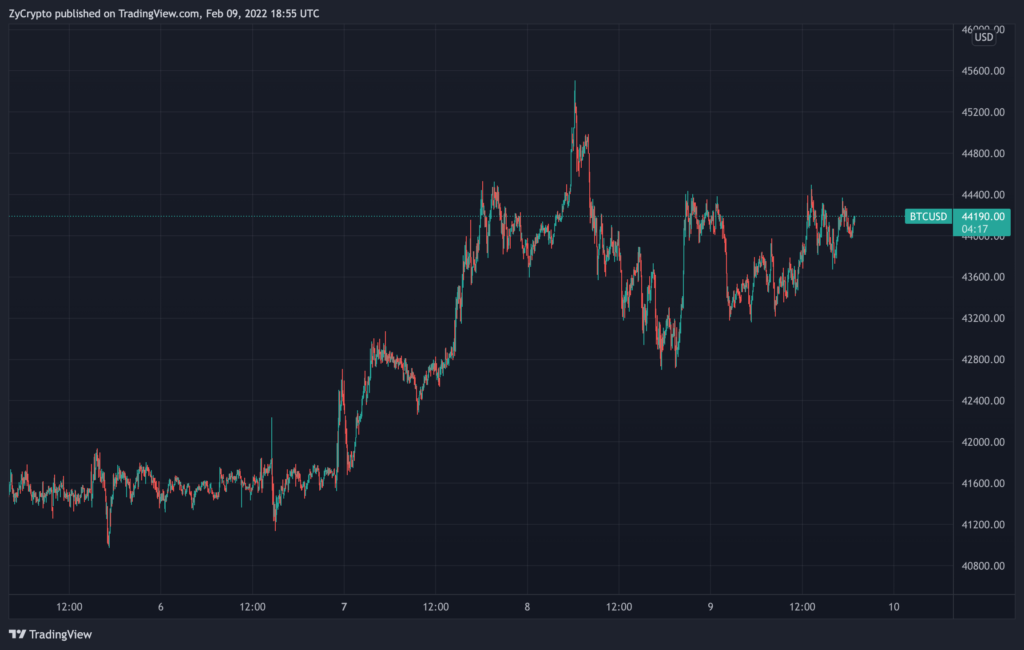The bitcoin price has recaptured the $44K level after last month’s precipitous fall that rocked both the crypto and stock markets.
Now, multinational investment banking giant JPMorgan Chase has renewed its prediction that the premier cryptocurrency could more than double to around $150,000 in the long term but has suggested that bitcoin’s current fair value is 12% lower than its market price.
JPMorgan Puts $150K Price Tag On BTC
In a note to clients on Tuesday, JPMorgan strategists led by Nikolaos Panigirtzoglou stated that bitcoin is almost four times as volatile as gold. They also asserted that BTC’s “fair value” is around $38,000 based on the bank’s price model, which is approximately 12% lower than its current trading price of $44,005.44.
The bank’s researchers note that bitcoin’s biggest hindrance to further institutional adoption is its wild swings. Nevertheless, a fair value of $50,000 is plausible should the volatility level reduce to three times.
More importantly, analyst Panigirtzoglou believes bitcoin could fetch a long-term price of $150,000. This is slightly higher than the $146,000 price target he set in January last year. For bitcoin to achieve this call, it will have to match the $2.7 trillion of private sector investment in gold. For perspective, the flagship crypto’s market capitalization topped $1.3 trillion in November, during the same time its price reached an all-time high of $69,044.77.
The analysts further observed that bitcoin’s sell-off last month does not feel like a capitulation as compared to the one posted in May 2021, when BTC lost over 50% of its total value after hitting a record high of $64,000. But some metrics, including holdings on exchanges and futures open interest indicate a “more worrisome position reduction trend” that started in November.
Meanwhile, JPMorgan CEO Jamie Dimon says bitcoin could increase 10x in the coming years — but he still won’t be investing in it.
Source: Read Full Article

